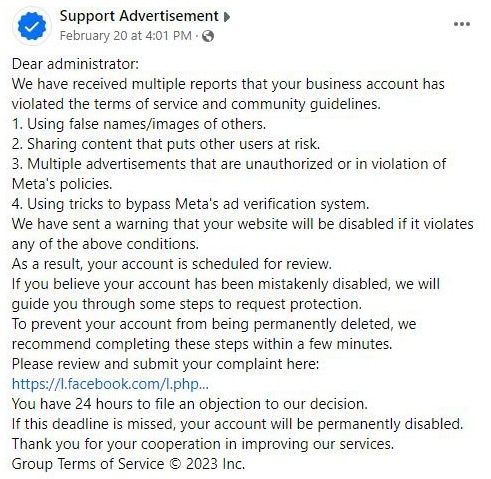Phishing Scams
Phishing is a process of tricking a user into going to a fake web page that looks like the page they expect to see where the user attempts to sign in or verify the account, at which point the attacker has the user's sign-in information for that service. The best way to avoid a phishing scam is to double-check the address in your browser to be sure the domain name is correct for the service you expect to sign in to. It isn't realistic to think you will never click on a malicious link. You have to check the domain name carefully because they can use tiny misspellings of the domain that look at a glance like the correct domain, like rackspace.com vs. rackspaces.com, or subdomains like rackspace.fkgh.com, but that is not rackspace.com.
If you are in doubt, go directly to the service by typing it in your address bar or using your bookmarks or favorites to navigate there. Don't use search engines to substitute using the address bar because phishing scams can exist in search engines for a while before they get caught and removed. That is not to say don't use search engines, but if you are going to sign in to an account, go to it directly. Here are some images of address bars from the three most popular browsers.
Microsoft Edge
Google Chrome
Mozilla Firefox
Two Factor Authentication & Connections
Two-factor authentication is not sufficient to protect you from these types of scams. Furthermore, if your account has been compromised due to a phishing scam, do not just change your password and assume the problem is resolved. Be sure to reset your backup codes provided as part of configuring your two-factor authentication, as attackers can download a new set and use this in future attacks. If you're using time-based tokens, you'll also want to reset this. Check any connected Apps and devices to be sure there isn't anything you don't recognize.
Facebook Scams
Facebook is currently experiencing a surge of phishing attacks. Thus far, they present as terms of service or content violations and prompt you to click on something to resolve it. These scams aim to gain access to your advertising platform to post malicious ads that violate Facebook policies and take advantage of stored payment methods. These phishing scams come as messages, which is your first clue that something is not right. Facebook will notify you in the Page Status sections of your business page if there are any real terms of service or content violations.
Once you have identified scam messages on Facebook Messenger, follow these steps. Report the profile for spam. Check to see if the option to ban the profile is there and ban it. Finally, mark the item as spam, ensuring that your customer response time is not affected.
Facebook Phishing Example

Email Scams
Rackspace is currently experiencing a surge of phishing attacks. These scams appear as alerts about terms of service violations or as a notice of access that you don't recognize. These scams come in as emails from what seems to be Rackspace but are not. They prompt you to click a link to resolve the issue or secure your account. Please do not click the links in emails that appear to be from Rackspace. Instead, please forward any emails that appear to be from Rackspace to us so we can review them.

Incoming Federal Regulation
The US Government is finally talking about regulations around cybersecurity, liability, and obligations. So far, we don't have much in the way of responsibility outside of libel and privacy concerning regulation and law. However, the current lack of liability for website owners and operators around third-person content makes the legal liability for the proliferation of things like the Facebook Phishing scams a pretty big grey area. Secretary Mayorkas recently made news on this topic, and with his statement, we can expect to see more conversation on the subject and hopefully, some action shortly after the election noise quiets down, regardless of who is in office.
Discover more from Gap Creek Media
Subscribe to get the latest posts sent to your email.

